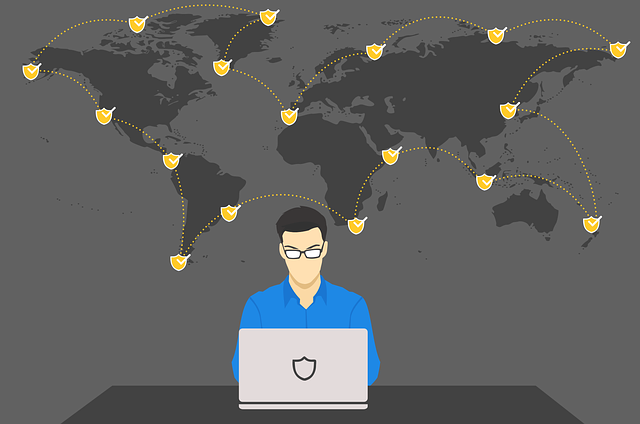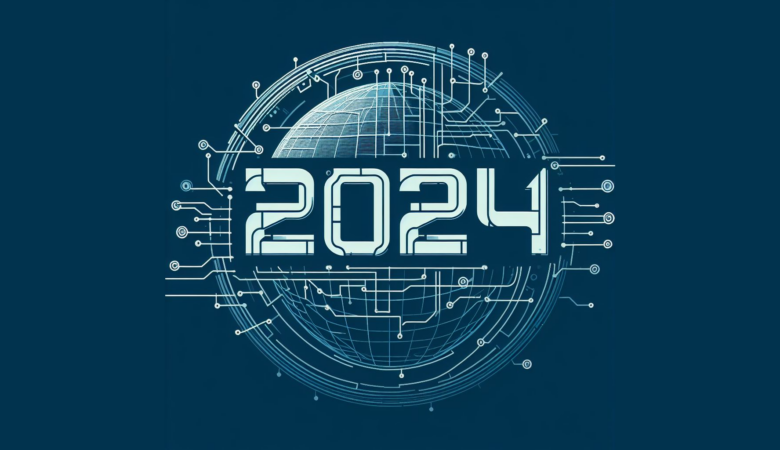This is the last post in our series of articles following our text about the tech trends for 2023. We already talked about the main branches of software development, AI & Machine Learning and the metaverse. To finish the series, today will be talking about cybersecurity. Specifically current cybersecurity technologies.
The Internet grow to be ubiquitous in both our personal and professional lives. It’s almost impossible to disconnect yourself from it, for entertainment, work or any sort of service provision issues. Since so much of our lives depend on computers and the internet, we are more exposed to threats. Because of that companies had to invest in the development of technologies to protect us and themselves from malicious characters.
So, in the next topics, we’ll give a brief explanation of what is cybersecurity, even though the name already explains it. Our focus will be on the most recent cybersecurity technologies. Things like firewalls and antivirus programs are already so ordinary that we preferred to leave them out of the article. We want to list what enterprises are looking for the most in this topic, but that should also be a concern of the more mundane user.
What is cybersecurity
In simple terms, cybersecurity is a set of security measures – using software, hardware and even safe practices -to protect any system, network or program from any sort of digital threat. These digital threats can come in the form of:
- Malware: programs developed to harm in any way a system
- Social engineering: using human interaction to trick users to give sensitive information
- Phishing: a type of social engineering that uses e-mails, messages and websites to steal the information from the user
- Distributed denial-of-service attacks: using multiple systems to target a network flooding it with messages to slow down the system or make it crash
- Advanced persistent threats: infiltrate a network and remaining the longest undetected time possible to steal vital information
- Man-in-the-middle attacks: intercepting a message which contains important data between two parties
There are many other forms of cyber threats and this is the main reason cybersecurity has to continuously improve itself to counter those types of attacks. In the following topics, we’ll name a few of the most recent cybersecurity measures companies use.
To clarify, we’ll be only focusing on the technological aspect of cybersecurity, which means hardware and software. We just want to highlight that cybersecurity doesn’t limit itself to only technologies. Some practices could be adopted as well to reinforce secure access to important information.
Cybersecurity Technologies #1: Behavioral Analytics
What this kind of software does is analyse an amount of data to understand the patterns of behaviour of each user. You can apply them to every single type of system, network or devices like computers or smartphones. The software helps cybersecurity professionals to identify unusual actions which would indicate a possible threat, cyberattack or vulnerability in the system.
Banking platforms, for instance, use behavioural analytics to understand their clients’ habits and identify possible fraud. This way they can notify clients that their bank accounts were misused and find potential data leaks.
Cybersecurity Technologies #2: Blockchain
Blockchain technology is a more recent type of data storage that takes cybersecurity as a core concept. Blockchain databases store the user data in different blocks. Each one of them connects to the other through cryptography. Those are the same fundamentals of the peer-to-peer technology that applications like WhatsApp use to assure data security and privacy.
By using a decentralized type of system, blockchain reduces the vulnerability to hacker attacks since the data will be stored across networks and not in a single location. Both parties are responsible for the authentication of every transaction, creating a more robust security system that lessens cyber threats.
Cybersecurity Technologies #3: Intrusion Detection Systems (IDS) and Intrusion Prevention System (IPS)
IDS and IPS are both tools that monitor data traffic to identify and prevent any non-authorized access to their systems. IDS can require some level of human intervention, but there are already automated systems that can decide whether to act. The same applies to IPS which will accept or reject data packages following a set of pre-established rules.
To simplify: IDS will only analyse network traffic to find potential cyberattacks while the IPS can stop an attack after the system identify it. So, to properly defend your systems from cyber threats, you have to apply both IDS and IPS. Those tools complement each other creating a more complex but safer system.
Cybersecurity Technologies #4: Embedded Hardware and Software Authenticators
As cybercrimes became more complex, passwords and PIN codes are no longer good enough protection for a user account of data. That’s why businesses now use two or multifactor authentication processes that often use embedded hardware in their own devices.
Hardware authenticators help to verify and validate the user’s identity by requiring the use of a physical device such as a card or token. But of course, this creates a second potential threat since these devices can be stolen. So systems nowadays use hybrid processes including software-based authentication as well. Examples of software authentication methods are mobile or web applications to create temporary access codes or even an SMS system to confirm user identification.
Cybersecurity Technologies #5: Context-Aware Security
Context-aware security is an expansion of the traditional cybersecurity processes by using complementary information to authorize access. This approach relies on several supplemental information of the user such as IP, location, device type and URL.
This set of data creates a context to legitimate the user in real time and reduces the success of hackers accessing a system even though they manage to intercept credentials like login and password. But is worth noting that although the context-aware approach increases the level of security it also imposes privacy concerns through the collection of end-user data.
Conclusion
As technology evolves, cybercriminals also become more sophisticated in their methods. So companies have an enduring race to create security protocols to counter their actions and assure the user’s data safety.
New forms of cybersecurity are developed each year and we dedicated this article to present a few of the more recent ones. Examples of current cybersecurity technologies and trends are behavioural analytics, blockchain, IDS and IPS tools, embedded hardware and software authenticators, context-aware security and others.
If you have more examples of reliable cybersecurity technologies, please let us know in the comments below. And if you need to reinforce your company’s security you can contact us on our blog page or our website.








You made a good point that any sort of automated technology should be context-aware. I’d like to find a good cybersecurity technology firm because I plan to start a small business alongside some of my old colleagues. Being able to ensure online security would be crucial since we will be operating mostly online.